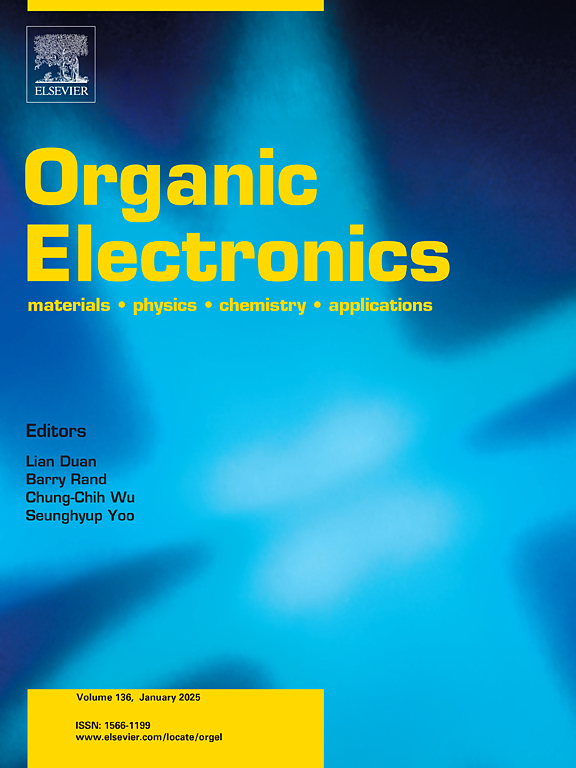Efficient post-treatment strategy for enhancing the performance and stability of the inverted perovskite solar cells based on Boc-D-Val-OH
IF 2.7
4区 工程技术
Q3 MATERIALS SCIENCE, MULTIDISCIPLINARY
引用次数: 0
Abstract
Recombination losses from perovskite/fullerene interface issues significantly limit the performance and stability of inverted perovskite solar cells (PSCs). A simple post-treatment method based on Boc-D-Val-OH (BDVO) is developed to overcome these issues. A systematic study has been conducted on the impact of BDVO on the physical properties of the film and the device. The results confirm that BDVO post-treatment can passivate trap states of the perovskite film surface, improve contact at the perovskite/fullerene interface, and enhance the built-in interface electrical field of the device. That improvements lead to enhanced carrier transport dynamics, as well as improves the performance and stability of PSCs. A relatively higher power conversion efficiency (PCE) of 23.02 % is achieved by BDVO post-treatment. Additionally, after storage in air (30–40 RH%) for 264 h (12 days) and in N2 for 312 h (13 days), the PCE of the BDVO devices can remain at 90 % and 95 % of their initial values, respectively, while the control devices under the same exposure conditions only maintain 83 % and 88 % of their initial PCE values. The study sheds light on the pathway for perovskite/fullerene interface material selection and design, aimed at enhancing device performance and stability through streamlined post-treatment.

提高Boc-D-Val-OH倒置钙钛矿太阳能电池性能和稳定性的有效后处理策略
钙钛矿/富勒烯界面问题导致的复合损失严重限制了倒钙钛矿太阳能电池(PSCs)的性能和稳定性。为了克服这些问题,开发了一种基于Boc-D-Val-OH (BDVO)的简单后处理方法。系统地研究了BDVO对薄膜和器件物理性能的影响。结果证实,BDVO后处理可以钝化钙钛矿膜表面的陷阱态,改善钙钛矿/富勒烯界面处的接触,增强器件的内置界面电场。这种改进增强了载流子传输动力学,并提高了psc的性能和稳定性。BDVO后处理的功率转换效率(PCE)相对较高,达到23.02%。此外,在空气(30-40 RH%)中储存264 h(12天)和在N2中储存312 h(13天)后,BDVO装置的PCE分别保持在其初始值的90%和95%,而在相同暴露条件下的对照装置仅保持其初始PCE值的83%和88%。该研究揭示了钙钛矿/富勒烯界面材料选择和设计的途径,旨在通过简化后处理提高器件的性能和稳定性。
本文章由计算机程序翻译,如有差异,请以英文原文为准。
求助全文
约1分钟内获得全文
求助全文
来源期刊

Organic Electronics
工程技术-材料科学:综合
CiteScore
6.60
自引率
6.20%
发文量
238
审稿时长
44 days
期刊介绍:
Organic Electronics is a journal whose primary interdisciplinary focus is on materials and phenomena related to organic devices such as light emitting diodes, thin film transistors, photovoltaic cells, sensors, memories, etc.
Papers suitable for publication in this journal cover such topics as photoconductive and electronic properties of organic materials, thin film structures and characterization in the context of organic devices, charge and exciton transport, organic electronic and optoelectronic devices.
 求助内容:
求助内容: 应助结果提醒方式:
应助结果提醒方式:


